Vang Vieng
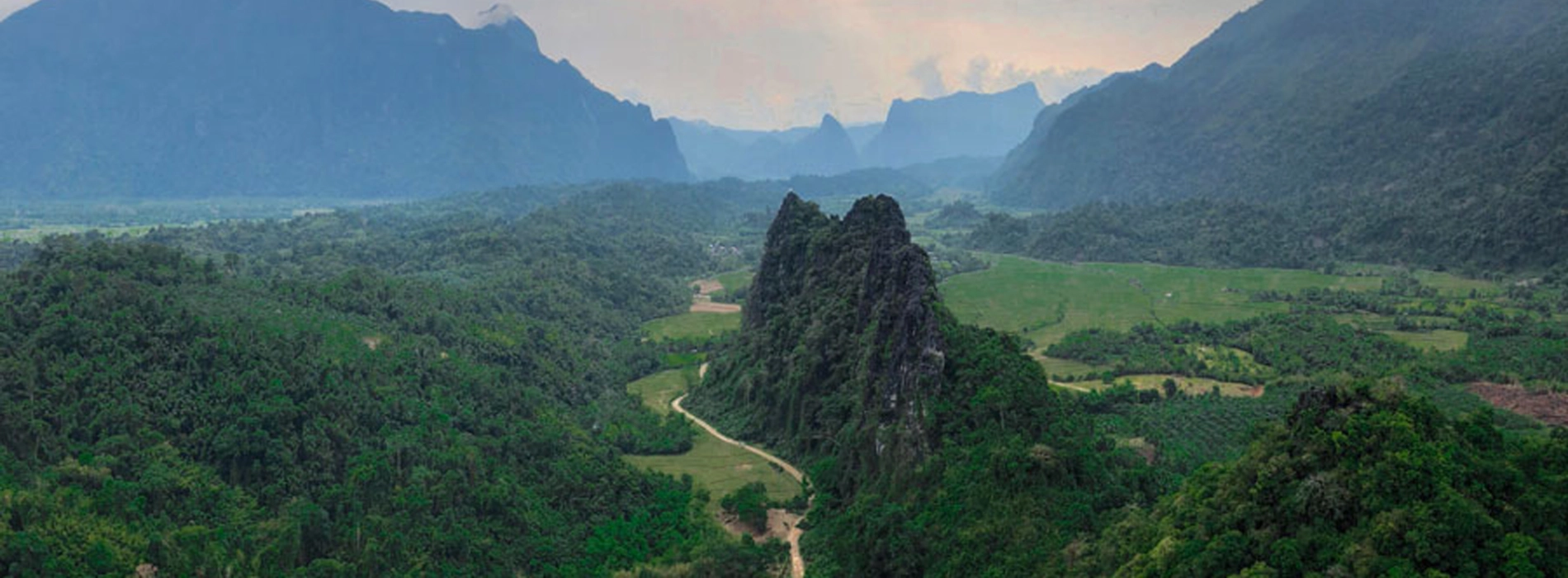
Located just a few hours by car from the capital Vientiane, the peaceful and romantic town of Vang Vieng with charming rivers will be a lovely stop on the journey to explore Laos. Let's explore this beautiful land with Asia King Travel.
Vang Vieng is a small town about 150 kilometers from Laos' capital, Vientiane. This place is famous for its peaceful rural landscape, cool fresh air, and the pace of life of local people, which is slow but not boring. There are no beautiful architectural works, modern resorts, or spacious paved roads, but every year, Vang Vieng still attracts a huge number of tourists.
Thanks to effective management activities, preserving natural beauty and limiting noise, Vang Vieng still retains the pristine beauty of a countryside village, bringing closeness and familiarity with an indescribable feeling of enchantment. According to The Laotian Times, this town has welcomed over 1 million tourists in the past 5 years, including over 700,000 foreign tourists.
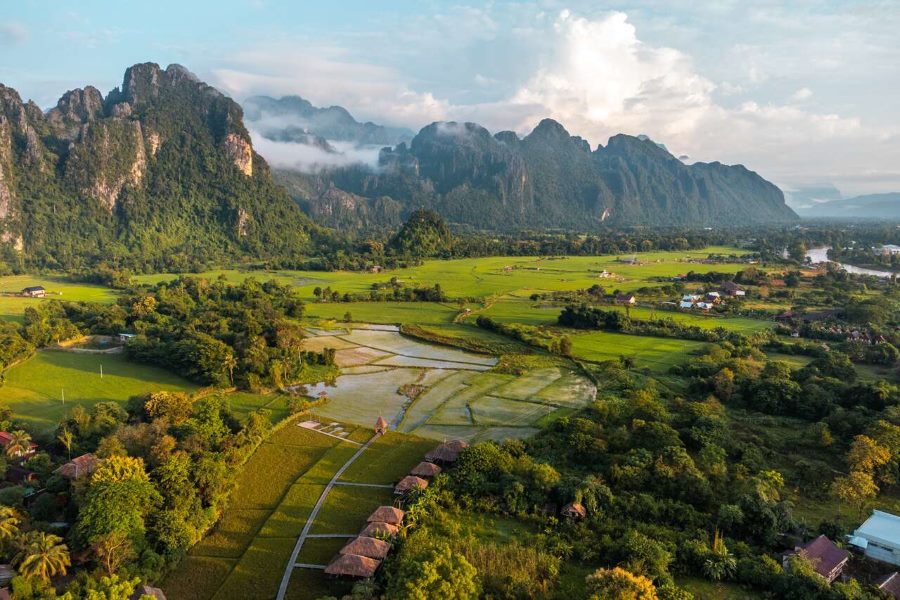
Vang Vieng is famous for its peaceful rural landscape. (Source: BucketListly blog)
The French colonial era cast its influence over Vang Vieng, shaping its culture and administration and contributing to the complex tapestry of Laos' history. This town was also an important military base during the Vietnam War.
After the war, Vang Vieng transformed into an attractive tourist destination, attracting tourists with its beautiful natural scenery, mysterious caves, and the simple life of local people. Nowadays, Vang Vieng has become an unmissable destination for tourists.
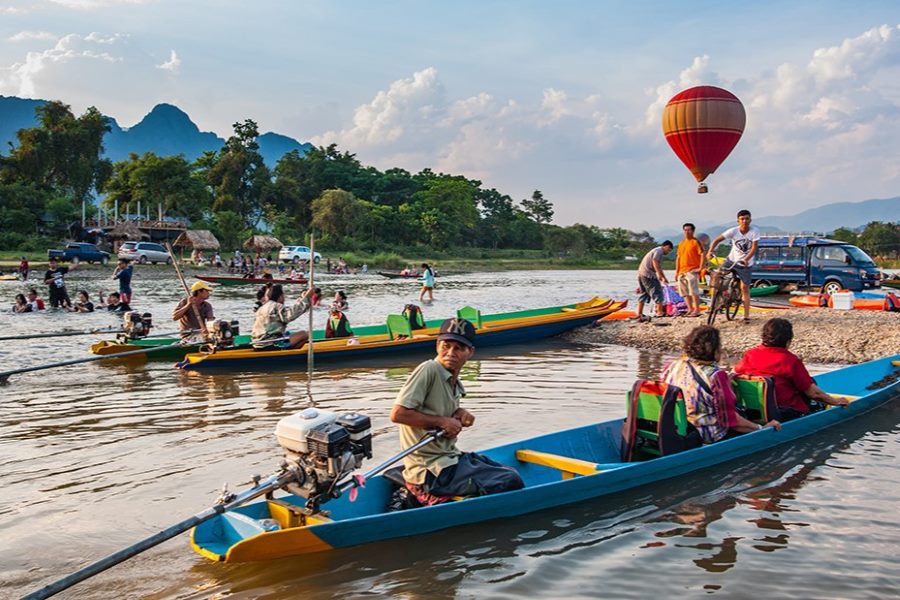
Vang Vieng stands as a symbol of adaptation and resilience. (Source: Wide Eyed Tours)
Read more: Laos Trekking Tours
Laos in general and Vang Vieng in particular have two distinct seasons: dry season and rainy season.
Dry Season (November to April): Vang Vieng may have lower rainfall and more comfortable temperatures. In this season, travelers can explore hiking trails, indulge in rock climbing, or leisurely tube down the river, all beneath clear, blue skies.
Rainy Season (May to October): The rainy season is often cloudy, humid, and can experience flooding, which may cause some transportation routes to be affected by floods and disrupt tourism activities due to the rain. However, the landscape will be lush and green; prices are also cheaper compared to the dry season.

Admire Vang Vieng from above (Mifa Travel)
By airplane: Tourists can fly to Vientiane-Xieng Khuan Airport or Luang Prabang, and arranging transportation to Vang Vieng is an option.
By bus: From Vientiane, a 3 to 4-hour bus ride will carry you through the scenic Laotian countryside to Vang Vieng. From Luang Prabang, it might take a 6 to 7-hour road journey to this captivating town.
By train: The train is more cost-effective and safer than the bus. In addition, trains are ideal if you want to travel at night. For long journeys, taking the train is also more comfortable as you can rest more.
By hiring a private car: Private transportation options are available for greater comfort and convenience. This is also the easiest way to get from Vientiane to Vang Vieng. You can go the way you want, stop, and visit wherever you like. You can also choose the vehicle type and size according to your needs for comfort.
Transport within Vang Vieng: Tuk-tuks, trishaws (lot-sam-lor), and jumbos (small tuk-tuks) are available all over town and are an easy way to get around. Tourists can also rent bicycles or motorbikes.
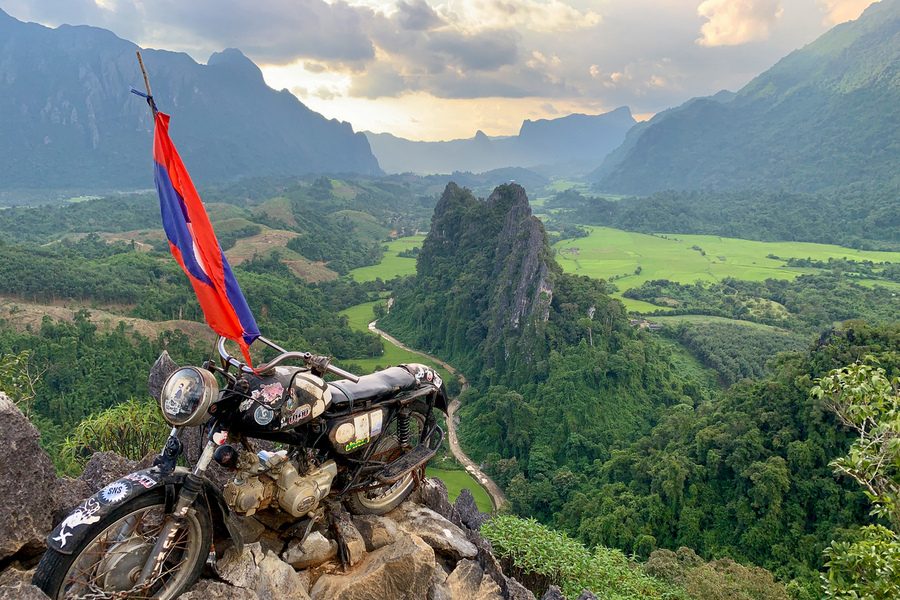
Traveling around Vang Vieng by motorbike. (Source: Pictorem)
Relaxing boat trips on the Nam Song River are the most popular activity for tourists in Vang Vieng, offering breathtaking views of the majestic mountains. For those who prefer a more active experience, it is possible to rent a kayak in the afternoon to immerse yourself in the magical sunset of the river.

Nam Song River is surrounded by limestone mountains, creating a very beautiful landscape. (Source: davidionut)
The dry season, from November to March or April every year, is the most suitable time to experience climbing and hiking in Vang Vieng. Short but steep climbing paths will lead you to one of the highest cliffs in this town - Pha Hon Kham cliff. This is where you can admire the sunrise with the thin rays of sunlight stretching across the mountain or nonchalantly watch the beautiful sunset. You can also climb up to Nam Xay Viewpoint to observe the panoramic view of Vang Vieng.
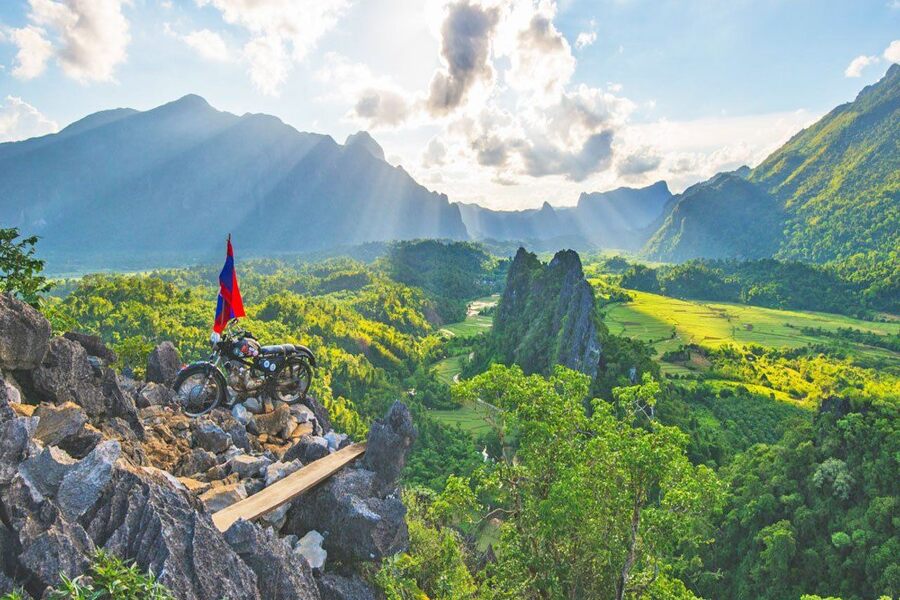
Panoramic view of Vang Vieng. (Source: BucketListly Blog)
Blue Lagoon is located about 7 kilometers from Vang Vieng. This is a natural complex of deep lagoons with blue water. Coming here, visitors will have the opportunity to immerse themselves in the picturesque nature with small, multi-layered waterfalls located halfway up the hill in a cool, quiet space.
Blue Lagoon Laos has a different terrain, suitable for developing all kinds of thrilling games. When you come here, you will experience the exciting feeling of jumping from above or swinging on a zipline.
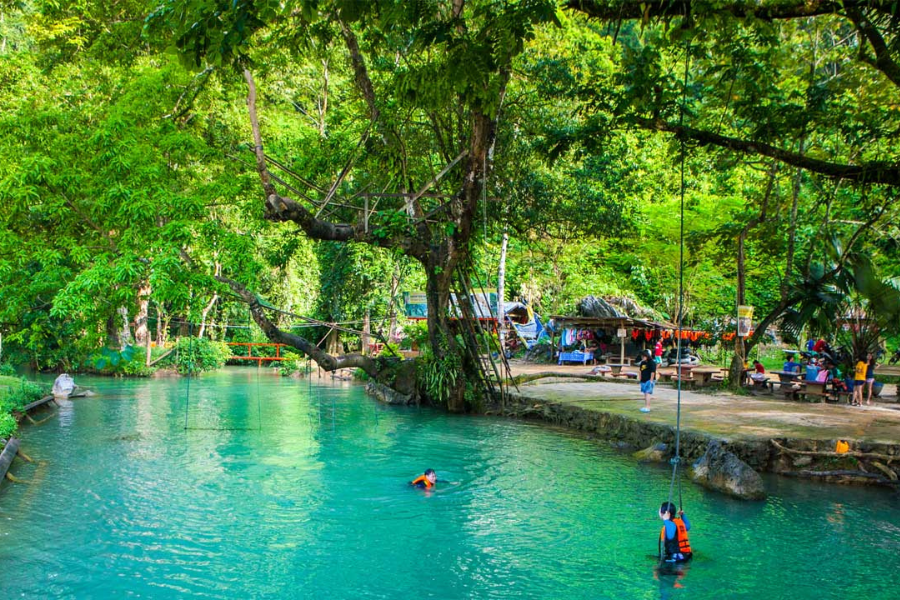
The Blue Lagoon in Vang Vieng is one of the most popular attractions in town. (Source: Discover Laos)
Exploring caves is also an extremely attractive experience when coming to Vang Vieng. You will be amazed by the vast space of the magnificent caves and admire the perfect masterpiece of nature here.
Visitors can choose off-road vehicles or motorbikes to visit the caves located in the west of the Nam Song River. Some caves here are like museums storing ancient Buddha statues, while others were once a refuge for locals from travelers. Most especially, visitors cannot miss Tham Pha Daeng cave. This cave also contains an underground lake and is the most ideal place for wild nature lovers to witness hundreds of bats flying out of the cave.
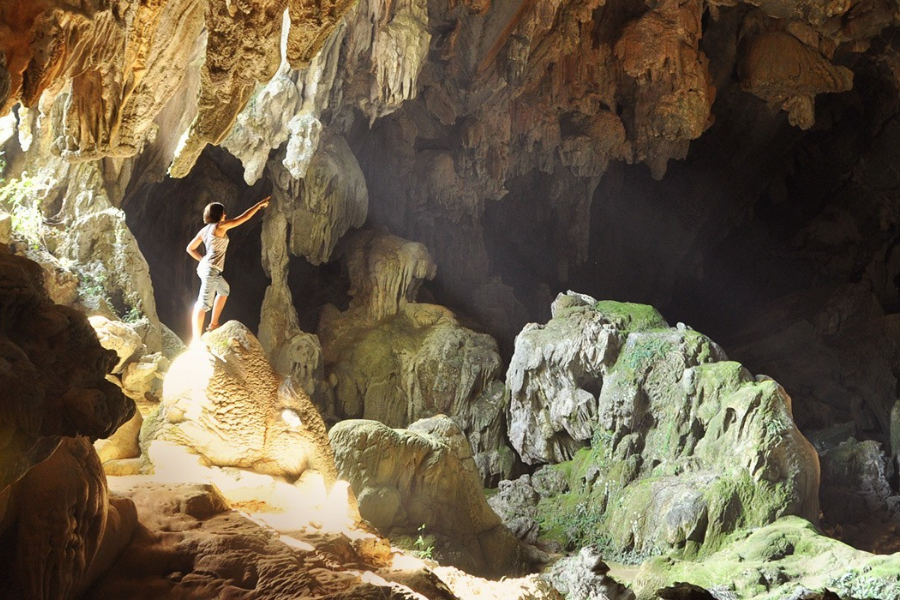
Tham Pha Daeng cave in Vang Vieng, Laos. (Source: Enchanting Travels)
Vang Vieng cuisine is a harmonious combination of traditional flavors and modernity. The dishes here are often made from fresh ingredients, especially local fruits and vegetables. You should not miss the opportunity to enjoy specialty dishes such as sticky rice, sausage, grilled fish, and fresh salads. Street food is also an interesting highlight in Vang Vieng, with affordable prices and rich flavors.
If you crave Western food, you can also find Italian, Mexican, and French restaurants. Vegetarians may also find Vang Vien a great place to find non-meat options, as Veggie Tables, Earth Recycled Restaurant, or local sandwich bars have the best vegetarian dishes in town.

Vang Vieng's cuisine owns a wide range of different style (Source: Fivetonine)
Known as a "paradise" for young travelers, Vang Vieng is a charming stopover on your journey through Laos, as it sits midway between Vientiane and Luang Prabang. Let's explore this small, peaceful countryside to enjoy a relaxing yet equally exciting experience.
You may also like: Laos Tours 15 days
Immerse yourself in the enchanting beauty of Luang Prabang and Asia King Travel'...
The Vang Vieng Tour 2 Days: Trekking and Ziplining offers two action-packed days...
The Vang Vieng Tour 3 Days offers an escape into the natural beauty of Laos with...